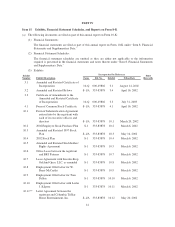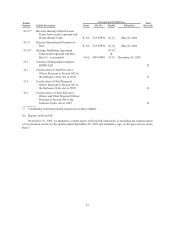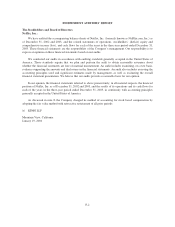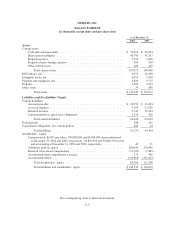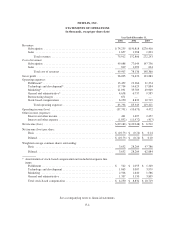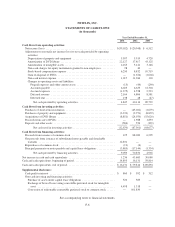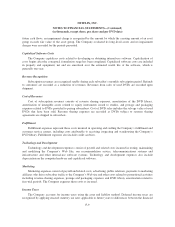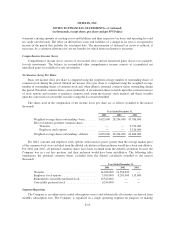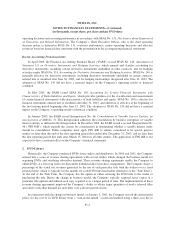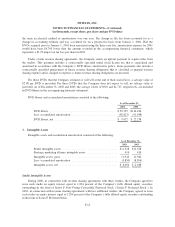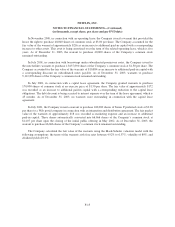NetFlix 2003 Annual Report Download - page 66
Download and view the complete annual report
Please find page 66 of the 2003 NetFlix annual report below. You can navigate through the pages in the report by either clicking on the pages listed below, or by using the keyword search tool below to find specific information within the annual report.NETFLIX, INC.
NOTES TO FINANCIAL STATEMENTS—(Continued)
(in thousands, except share, per share and per DVD data)
All short-term investments are classified as available-for-sale and are recorded at market value. Net unrealized
gains (losses) are reflected in accumulated other comprehensive income.
A decline in the market value of available-for-sale investments below cost that is deemed to be other-than-
temporary results in a reduction in the carrying amount to fair value. The impairment is charged to earnings and a
new cost basis for the investments is established. To determine whether an impairment is other-than-temporary,
the Company reviews factors including the economic environment and market conditions, its ability and intent to
hold the investments until a market price recovery, the severity and duration of the impairment, and forecasted
performance of the investees. No impairment charges were recorded for the periods presented.
As of December 31, 2003, the Company’s short-term investments were invested in the Vanguard Short-
Term Bond Index Fund—Admiral Shares (the “Fund”). The target index for the Fund, the Lehman Brothers 1-5
Year Government/Credit Index, is comprised of U.S Treasury and agency securities and investment-grade
corporate bonds with maturities of one to five years. As of December 31, 2003, the Fund had investments in 517
issues with an average quality of AAA/AA1, an average duration of 2.5 years and an average maturity of 2.7
years. As of December 31, 2003, the cost, unrealized gain and market value of the Company’s short-term
investments were $44,701, $596 and $45,297, respectively.
Amortization of DVD Library
The Company amortizes its DVD library, less estimated salvage value, on a “sum-of-the-months”
accelerated basis over one year. See Note 2 for further discussion.
Amortization of Intangible Assets
The Company amortizes the intangible assets associated with certain revenue sharing and strategic
marketing alliance agreements over the terms of the agreements. See Note 3 for further discussion.
Property and Equipment
Property and equipment are carried at cost less accumulated depreciation. Depreciation is calculated using
the straight-line method over the shorter of the estimated useful lives of the respective assets, generally up to
three years, or the lease term, if applicable.
Impairment of Long-Lived Assets
Statement of Financial Accounting Standards (“SFAS”) No. 144, Accounting for the Impairment or
Disposal of Long-Lived Assets, provides a single accounting model for long-lived assets to be disposed of. SFAS
No. 144 also changes the criteria for classifying an asset as held for sale, broadens the scope of businesses to be
disposed of that qualify for reporting as discontinued operations and changes the timing of recognizing losses on
such operations. The Company adopted SFAS No. 144 on January 1, 2002. The adoption of SFAS No. 144 did
not affect the Company’s financial statements.
In accordance with SFAS No. 144, long-lived assets, such as property and equipment and intangible assets
subject to amortization, are reviewed for impairment whenever events or changes in circumstances indicate that
the carrying amount of an asset group may not be recoverable. Recoverability of assets groups to be held and
used is measured by a comparison of the carrying amount of an asset group to estimated undiscounted future cash
flows expected to be generated by the asset group. If the carrying amount of an asset group exceeds its estimated
F-8



